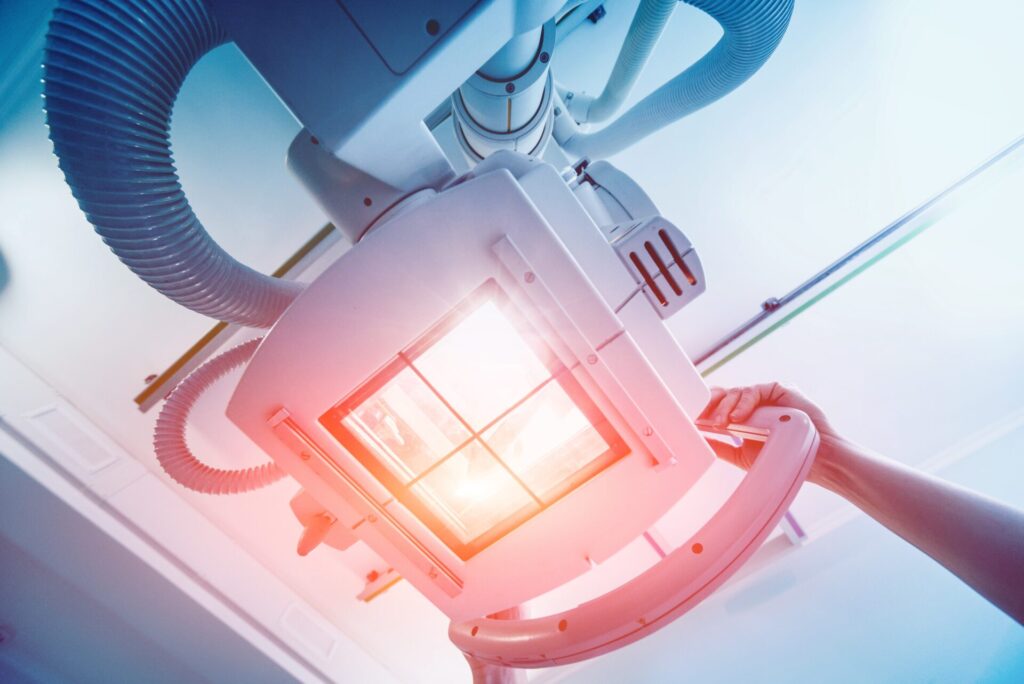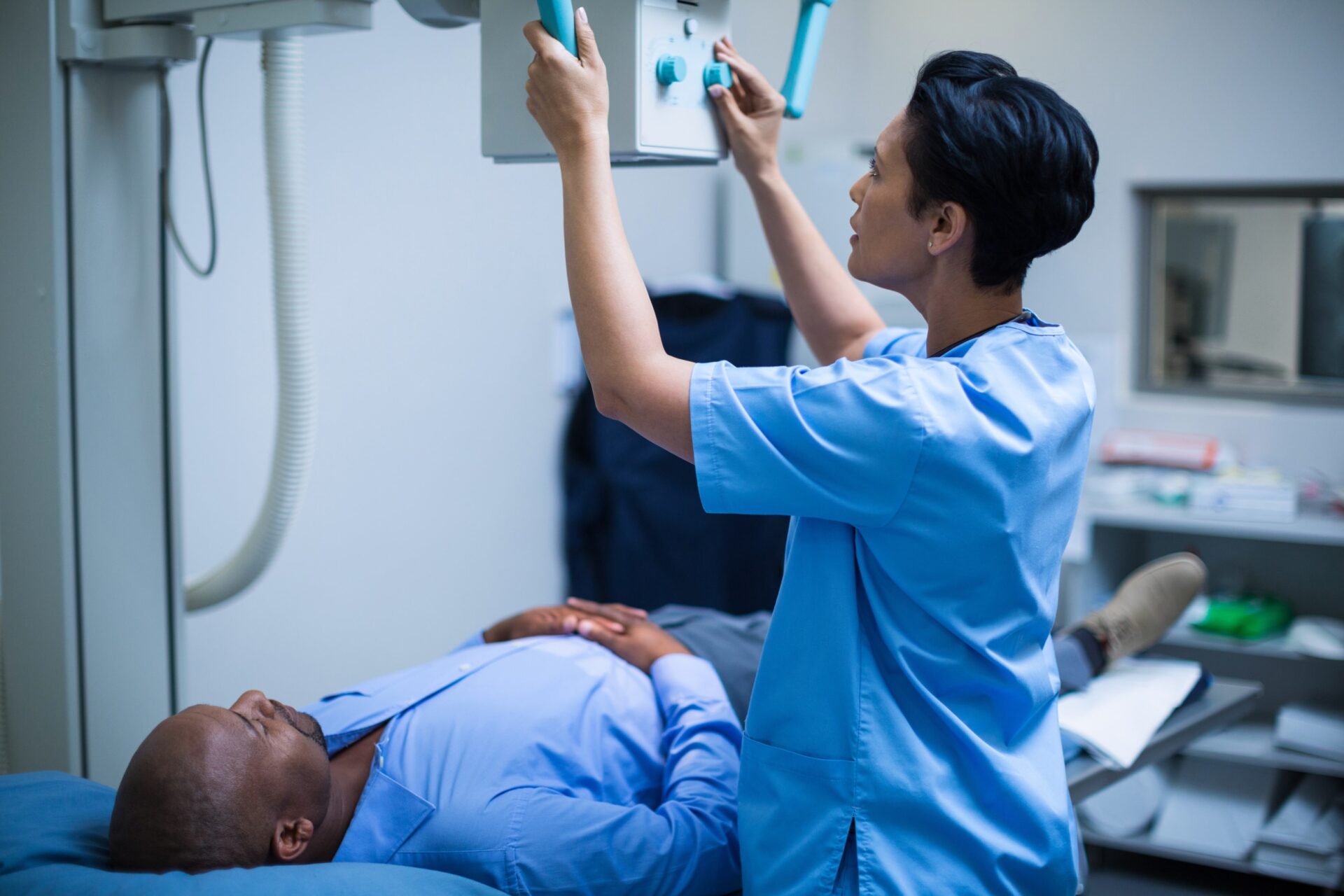X-ray overexposure poses significant health risks, including cancer and acute injuries. When this overexposure happens due to medical negligence, it can lead to legal claims. This article discusses what X-ray overexposure is, common causes, health impacts, and how to pursue legal action if you’ve been affected.
Key Takeaways
- X-ray overexposure poses serious health risks, including increased cancer risk and acute effects like hair loss and skin damage, particularly in children.
- Common causes of overexposure include operator errors, faulty equipment, procedural mistakes, and fatigue among radiology staff, highlighting the need for proper training and quality assurance.
- Victims of X-ray overexposure can pursue legal malpractice claims, requiring documented evidence of negligence and potentially leading to compensation for both economic and non-economic damages.
If you or a loved one has suffered due to X-ray overexposure resulting from medical negligence in New York, it’s essential to take action. At The Pagan Law Firm, we understand the profound impact that such incidents can have on your health and well-being. Our dedicated team is here to provide you with the guidance and legal support you need to pursue your claim. We invite you to schedule a complimentary consultation to discuss your situation and explore your legal options. Don’t let the consequences of medical negligence go unaddressed—reach out to us today at 212-967-8202 or fill out our contact form to begin your journey toward justice.
👉Also Read: Find the Best Radiology Malpractice Lawyer for Your Case in New York
Understanding X-Ray Overexposure

X-ray overexposure refers to the condition where the radiation dose from X-ray imaging surpasses safe limits, posing significant health risks. Unlike standard X-rays, CT scans deliver substantially higher doses of radiation, which can increase the risk of developing cancer. Health authorities classify X-ray exposure as a carcinogen due to its potential to cause DNA mutations.
The risk of developing cancer from X-ray exposure escalates with the number of scans a person receives over their lifetime. This is particularly concerning for children, who are more sensitive to radiation effects than adults, making them more susceptible to cancer from X-ray procedures. High levels of radiation exposure can also lead to acute health issues such as hair loss and skin damage, which are immediate and visible manifestations of overexposure.
Understanding the factors contributing to X-ray overexposure is crucial in preventing these adverse effects. These factors include excessive dosage during imaging procedures, equipment malfunction, or improper technique. Proper management and awareness of these factors can significantly reduce overexposure risks, ensuring patient safety.
Common Causes of X-ray Overexposure
Operator mistakes, like incorrect settings of kilovoltage peak (kVp) and milliamperes (mA), often result in radiology errors and excessive radiation exposure. Proper training and vigilance are crucial to avoid these errors in radiological procedures. Faulty or outdated equipment significantly contributes to overexposure during imaging procedures. Malfunctioning or outdated X-ray machines may deliver inaccurate radiation doses, posing significant risks to patients.
Procedural mistakes, such as incorrect positioning of patients or imaging devices, can also lead to overexposure. Precise technique and attention to detail are necessary to avoid such errors during radiological exams. Inadequate quality assurance practices can lead to patients receiving unnecessarily high radiation doses, exacerbating the problem. Regular maintenance, calibration of equipment, and stringent quality checks are vital to minimize these risks.
Fatigue from increased workloads on radiologists and technicians raises the likelihood of mistakes during X-ray procedures. Overworked professionals might rush procedures or overlook critical details, inadvertently increasing patient radiation exposure. Addressing workload issues and ensuring adequate rest and support for radiologists can reduce error rates and enhance patient safety.
Health Consequences of X-Ray Overexposure
X-ray overexposure can lead to severe and long-lasting health consequences. The potential for cellular damage and the development of cancer is a significant concern. While the relationship between low-dose radiation exposure and cancer risk is debated, some studies suggest minimal risk, whereas others highlight potential dangers. For example, the estimated cancer risk from a typical CT scan is about one in 2,000, which must be weighed against its diagnostic benefits.
High radiation doses from certain imaging procedures can cause severe damage like skin burns and hair loss. These acute health issues are more immediate and can serve as clear indicators of overexposure. However, X-ray overexposure injuries can take years to manifest, complicating the detection of malpractice. The delayed onset complicates linking health issues directly to past imaging procedures, often necessitating detailed medical records and expert analysis.
Radiology errors can also lead to serious health consequences beyond cancer, such as brain injuries and aortic aneurysms. These conditions can result from the improper use of imaging films or the failure to properly read and interpret the images, leading to diagnostic errors.
Legal Grounds for Filing a Medical Malpractice Lawsuit
Establishing negligence during medical care is necessary to file a medical malpractice lawsuit. Negligence occurs when a healthcare provider fails to adhere to established medical standards, potentially harming patients. Medical malpractice claims are viable if a health problem should have been reasonably identified, and the patient suffers due to the error. This includes cases where radiologists, device manufacturers, or medical facilities are responsible for radiological errors.
Human error and negligence are common causes of radiology errors, significantly contributing to malpractice claims. Failing to provide adequate information about the risks involved in radiological procedures can be grounds for a malpractice claim, highlighting the importance of informed consent. Medical records are pivotal in establishing facts and demonstrating a breach of duty in radiology malpractice cases.
Expert witnesses support allegations that a standard of care was not met. Medical experts clarify whether the radiologist’s actions met professional expectations. Consulting a radiology malpractice attorney offers guidance on your rights and potential claims, aiding in navigating the complex legal landscape of medical malpractice.
Proving Negligence in X-Ray Overexposure Cases
Demonstrating that a breach of care led to actual injuries is essential in proving negligence in X-ray overexposure cases. Documented medical records indicating failures in the standard care procedure can serve as evidence of negligence. These records establish a timeline of events and identify where the radiologist’s failure occurred. Imaging tests document the extent of exposure and potential harm, serving as key evidence.
Expert testimony clarifies whether medical professionals met the expected standard of care, making it essential in malpractice cases. Such testimony can highlight systematic errors during the X-ray process, indicating negligence. Proving a breach of duty in medical negligence cases often requires corroborating evidence from various sources, making the medical malpractice lawyer’s role crucial in effectively gathering and presenting this evidence.
Lawyers handling radiology malpractice claims gather the essential documentation and professional opinions to support these cases. Their knowledge of the legal system and understanding of medical imaging standards can greatly influence the outcomes of the claims.
Types of Compensation Available
Victims of X-ray overexposure can seek compensation for both economic and non-economic damages. Economic damages cover quantifiable financial losses like lost wages and medical expenses incurred due to malpractice. These damages alleviate the financial burden on victims and their families, ensuring access to necessary medical treatment and support.
Non-economic damages cover mental anguish, suffering, and loss of enjoyment of life resulting from malpractice. These damages recognize the profound, intangible impact that medical malpractice injuries can have on the quality of life. Compensation may also cover household services lost due to the injury, representing both tangible and intangible losses.
Knowing the types of compensation available is crucial for victims seeking justice and financial relief. Consulting a radiology errors lawyer helps victims identify all possible avenues for compensation and ensure they receive their full legal entitlement.
Steps to Take if You Suspect X-ray Overexposure
If X-ray overexposure is suspected, first obtain all relevant medical records and imaging tests. These documents are critical for evaluating the extent of exposure and identifying radiology errors. A second opinion from a medical expert can critically assess the imaging process and detect initially missed abnormalities.
Immediate action is crucial. Start by documenting the diagnostic error’s impact on your health. Include medical reports, personal health logs, and photographic evidence of visible injuries like skin burns or hair loss in this documentation. Demonstrating the diagnostic error’s impact is vital for building a strong case.
A medical malmalpractice lawyer can assess the radiologist’s performance, gather necessary evidence, and advise on the best legal strategy for pursuing compensation. Acting quickly ensures you meet legal deadlines and strengthens your case against potential radiology mistakes.
How a Medical Malpractice Lawyer Can Help
In cases of radiology errors, a medical malpractice attorney concentrates on clients’ legal rights and advocates for fair compensation. Skilled radiology malpractice attorneys navigate the legal process, from filing claims to negotiating settlements and preparing for court if necessary. Their knowledge and dedication ensure that victims’ rights are protected throughout the legal journey.
Legal representation is vital for radiology error victims, helping them deal with insurance companies and liable parties. Experienced New York medical malpractice lawyers deeply understand medical imaging standards and can effectively argue that the radiologist’s service did not meet acceptable standards.
Our medical malpractice lawyers at the Pagan Law Firm offer complimentary consultations to discuss cases and provide legal guidance. This initial consultation helps victims understand their legal standing and potential for recovering compensation. With a track record of securing settlements and court victories in radiology malpractice claims, The Pagan Law Firm is a reliable advocate for those affected by medical malpractice.
👉Also Read: Conditions That Healthcare Professionals Commonly Misdiagnose
Seeking Justice for Radiological Errors in New York
The Pagan Law Firm recognizes the significant challenges individuals face when affected by radiological mistakes and is dedicated to providing the assistance needed during such difficult times. With our legal services available across multiple locations, including New York City and the surrounding counties, we are well-equipped to support victims of medical negligence.
You can easily arrange a complimentary consultation by reaching out to our radiology malpractice law firm through phone or online contact form. This initial step is vital for understanding your legal options and beginning the process of pursuing justice and compensation. Our commitment to addressing medical errors and advocating for patients’ health and rights reinforces our role as a trusted ally in navigating complex medical malpractice cases. Contact us for a free consultation with a medical malpractice lawyer today.
Frequently Asked Questions
What is a radiologist misdiagnosis?
A radiologist misdiagnosis occurs when a radiologist incorrectly interprets medical images, leading to a failure to identify an illness or condition accurately. This can significantly impact patient care and treatment outcomes.
What can be the consequences of a misdiagnosed tumor?
A misdiagnosed tumor can result in delayed treatment, which may allow the cancer to progress to a more advanced stage, making it harder to treat effectively. Timely and accurate diagnosis is crucial for the best possible outcomes.
What are some reasons for radiological errors?
Radiological errors often arise from factors such as inadequate image review, misinterpretation, lack of experience, and communication errors. Addressing these issues is crucial for improving diagnostic accuracy and patient safety.
What types of damages can be sought in a radiologist misdiagnosis claim?
In a radiologist misdiagnosis claim, you can seek economic damages for quantifiable financial losses and non-economic damages for pain and suffering, loss of life enjoyment, and emotional distress. These categories represent the various impacts of misdiagnosis on your life.

